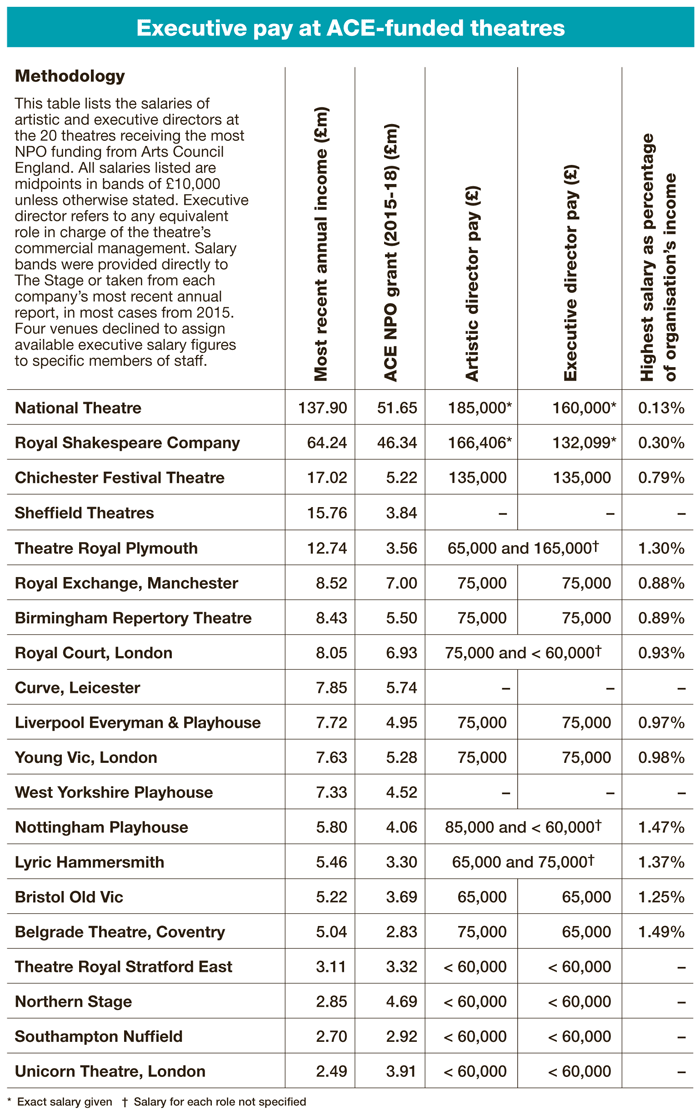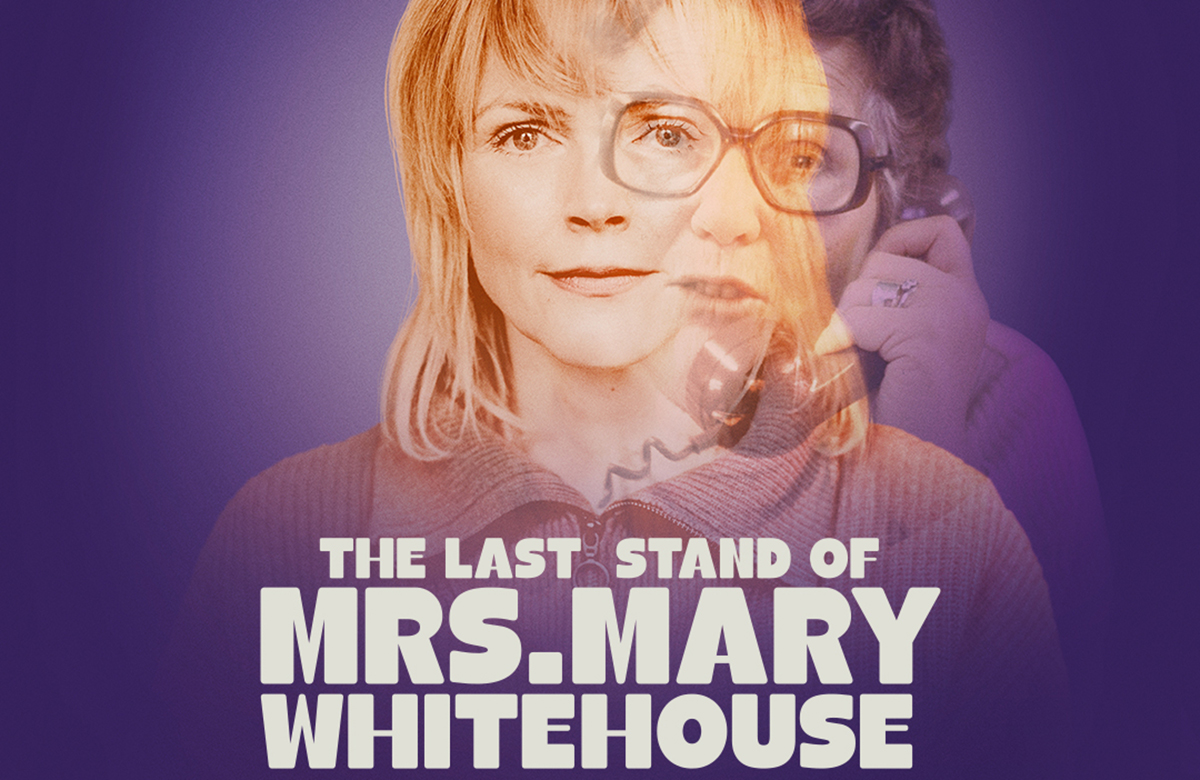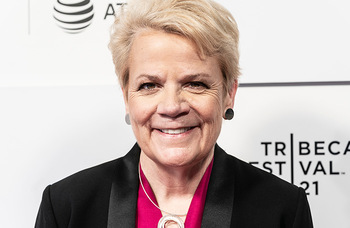Revealed: £29k gender pay gap at top theatres
Women leaders at top subsidised theatres are paid £29,000 less on average than men, according to new research by The Stage.
Among high earners – with salaries of more than £60,000 – male executives earn an average of £114,000 compared with £85,000 for their female counterparts. Findings also show that artistic and executive directors at top publicly funded theatres earn a median salary of £75,000.
The Stage looked at executive pay levels at the 20 theatre companies that receive the highest amount of regular funding from Arts Council England – though three theatres declined to disclose this information on any public platform.
More than two thirds of leaders at the most subsidised companies earn more than £60,000 per year, while seven are paid in excess of £100,000. In accordance with Charity Commission guidelines, the salaries of 10 executives were not published in any annual accounts as these were less than £60,000.
 Analysis of salaries of black, Asian and ethnic minority leaders in the industry could not be undertaken because there are none at any of the top 20 most heavily subsidised theatres.
Analysis of salaries of black, Asian and ethnic minority leaders in the industry could not be undertaken because there are none at any of the top 20 most heavily subsidised theatres.
National Theatre director Rufus Norris is the highest-paid executive in subsidised theatre with a salary of £185,000, with executive director Lisa Burger earning £160,000.
The second biggest salary – £166,406 – is paid to Royal Shakespeare Company artistic director Gregory Doran, who also receives accommodation in Stratford-upon-Avon worth £26,593 per year. Executive director Catherine Mallyon receives a salary of £132,099, plus housing worth £16,776 a year.
An RSC spokeswoman said the salaries were “in line with comparable roles in the arts sector”, and added: “If a post holder did not want to take advantage of the specific accommodation provided, then no accommodation allowance would be paid.”
Four theatres provided senior pay information in their annual reports but declined to clarify which executive earned each salary. Among these was the Theatre Royal Plymouth, where there is a £100,000 gap between the salaries of its chief executive and artistic director. One earned close to £165,000, while the other earned about £65,000.
The theatre’s chairman, Nick Buckland, insisted these two roles were “not comparable” or “equivalent” to those at most other theatres.
He explained the chief executive “leads on all large-scale co-producing negotiations, and manages all commercial operations,” while the artistic director has senior management responsibilities “but does not carry the wider responsibilities of those in other organisations – who also act as the managing director or CEO”.
Only six companies disclosed their executive salaries to The Stage. Other figures are taken from each company’s most recent annual report – in which the Charities Commission urges registered charities to list the pay levels of any staff earning more than £60,000.
Sheffield Theatres, West Yorkshire Playhouse and Curve in Leicester did not list these pay levels and, when asked, refused to reveal their executives’ salaries. All three theatres declined to comment further.
Arts Council England told The Stage it did not track how much its national portfolio organisations paid their staff, but urged theatres to be open about the salaries of their executive leaders.
An ACE spokeswoman said: “We welcome The Stage’s work on this important issue. While levels of salary are a matter for individual organisations, we believe that organisations in receipt of public funds should be clear and transparent about how they are spent.
“The arts council publishes the salaries of the executive team and we would encourage fundees to do the same.”

More about this organisation
Production News
Recommended for you
More about this organisation
Production News
Recommended for you
Most Read
Across The Stage this weekYour subscription helps ensure our journalism can continue
Invest in The Stage today with a subscription starting at just £7.99















